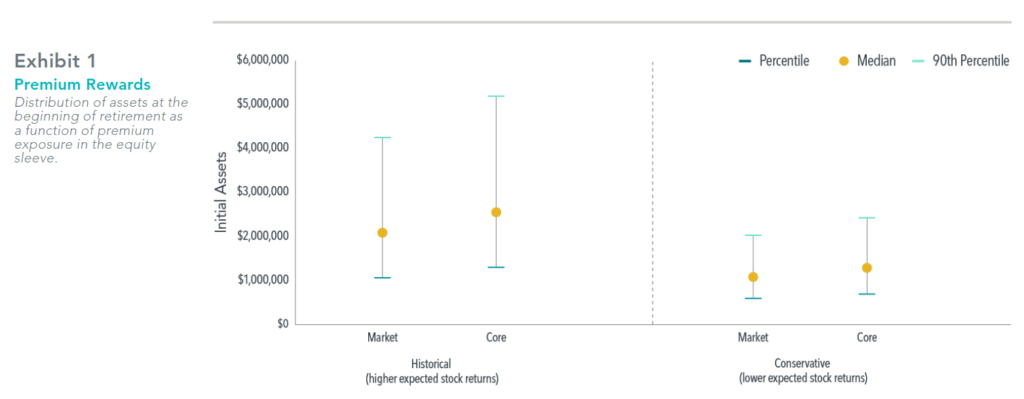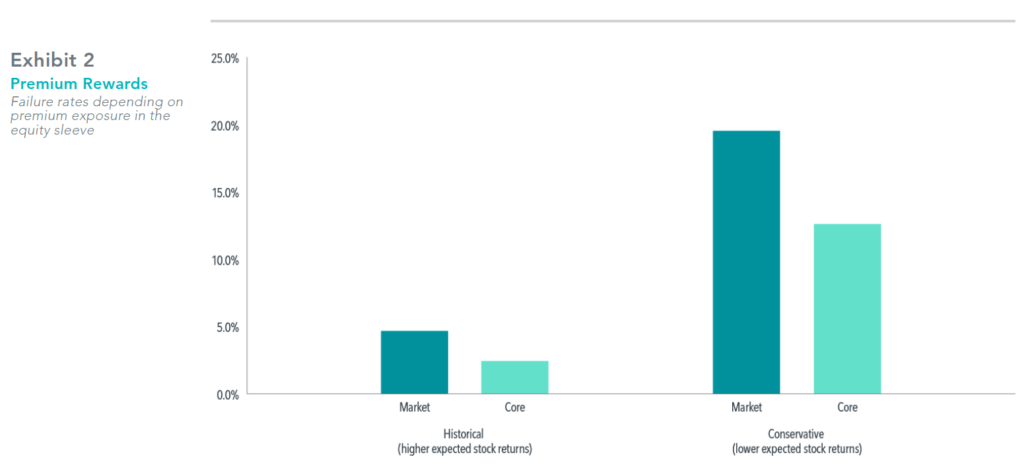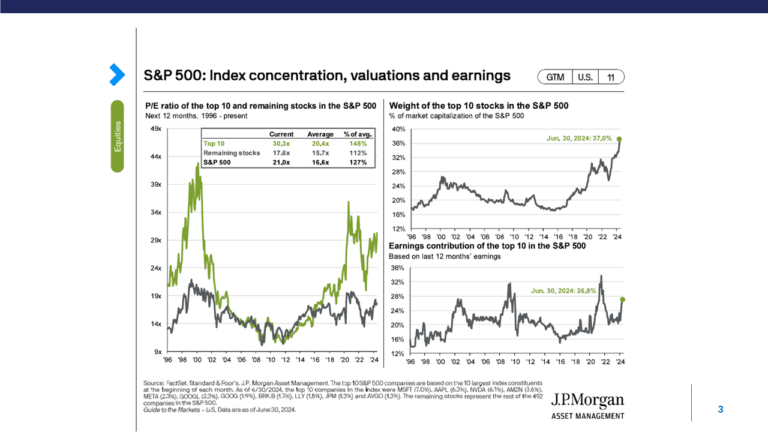Mathieu Pellerin, PhD
Senior Researcher and Vice President
Dimensional Fund Advisors:
Many retirement investors hold equity portfolios that track broad market indices, either
directly or through other investments such as target date funds. Despite their
widespread popularity, market portfolios may leave money on the table. Core equity
portfolios—low-cost, broadly diversified equity portfolios with a moderate emphasis on
the size, value, and profitability premiums—can provide higher expected returns while
controlling the risk of underperformance relative to the market.
In new Dimensional research, we examine the benefits of core equity investing for
retirement outcomes. The potential benefits can start building up in the accumulation
phase. Consider two investors who contribute to a retirement account from age 25 to 65
and follow a conventional target date glide path, in which assets are heavily invested in
equities at younger ages and converge to a 50/50 mix of stocks and bonds by age 65.
The equity portion is invested either in a core portfolio or the broad market without any
emphasis on the premiums. Our results, summarized below, show that an investor in the
core portfolio will typically reach 65 with 15%–20% more assets than an investor in the
plain market portfolio.

The observed benefits of core equity investing continue into retirement. Going back to
our example, let’s assume that both investors retire with a 50/50 split of stocks and bonds
and spend a fixed amount every year. If future stock returns look like past returns, the
probability of failure with either portfolio is low (see Exhibit 1), but the core portfolio still
does better—and, as we show in the paper, also results in a higher average bequest. If
future stock returns are lower than in the past, failure rates increase across the board, but
so does the potential benefit of core equity, which reduces the average failure rate from
20% to 13%. Here, too, the cost of tracking a market index appears steep; the chance of
running out of assets early jumps by 7 percentage points—nearly 54%.

Of course, these benefits come at the cost of tracking error relative to the market,
something that market indexing avoids by definition. However, our results show that,
when it comes to avoiding tracking error, the cure may be worse than the disease. The
study finds that market indexing results in initial retirement assets that are 15% lower on
average relative to the core approach. Would you give up an expected 15% of your
retirement assets to avoid all tracking error?
Retirement investing involves long investment horizons, which help improve the
reliability of capturing the premiums and magnify the effect of higher expected returns.
This makes core equity investing an attractive, practical alternative to market indexing—
one that can put retirement investors in a stronger position to reach their goals.
See attached for important sources and disclosures.


